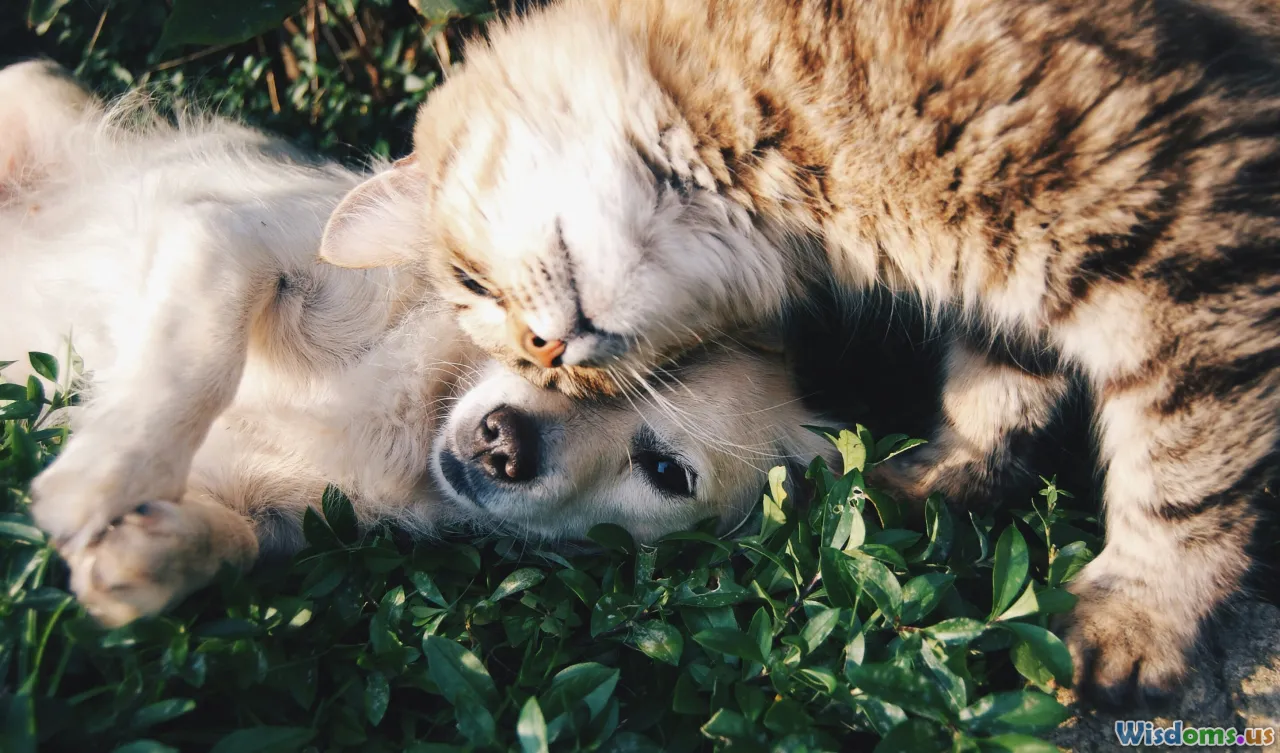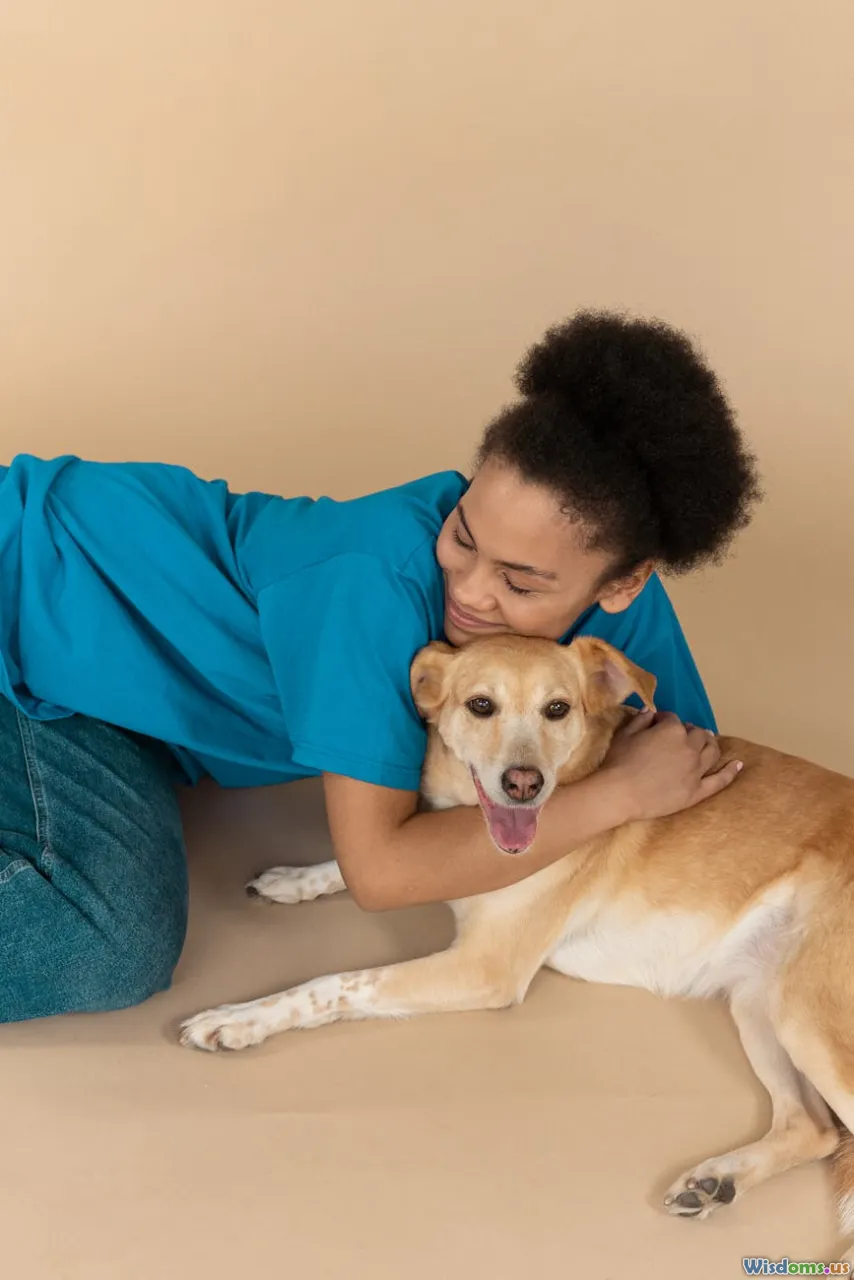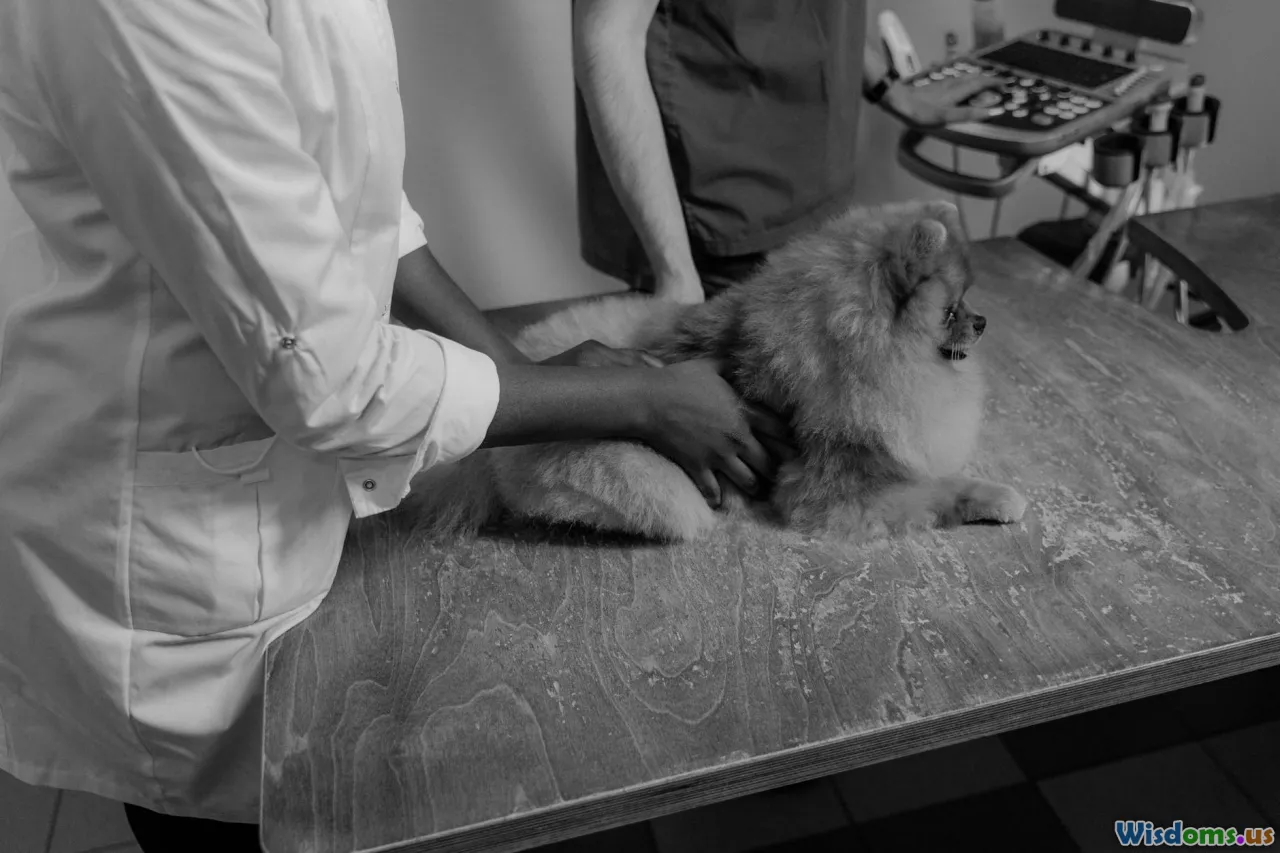
Fostering Senior Pets Benefits and Practical Advice
15 min read Discover the benefits of fostering senior pets and get practical advice for providing them with loving, supportive homes. (0 Reviews)
Fostering Senior Pets: Benefits and Practical Advice
Adopting any animal is an act of compassion, but opening your home to an aging pet is an especially meaningful gesture. Senior cats and dogs often wait longer in shelters and face unique challenges that make fostering not only deeply rewarding but also crucial. Whether you're a seasoned animal lover or considering your first foster experience, understanding the distinctive joys and practicalities of senior pet foster care can help both you and your new furry friend thrive.
The Overlooked Seniors — Why Senior Pets Need Foster Homes

Approximately 25% of shelter pets in the United States are considered seniors—typically seven years or older for dogs and ten years or older for cats. Many arrive after a devoted life as a companion, surrendered due to owner illness, changes in living situations, or simply old age. Sadly, they are often bypassed in favor of younger, more "adoptable" animals.
Fostering a senior pet does more than provide a temporary home. It offers a sanctuary from the stress of the shelter, giving these older animals a second chance at happiness.
Real-Life Impact
Take the story of "Maggie," a 12-year-old Labrador surrendered after her owner moved to assisted living. Her prospects in the crowded shelter were bleak until a foster volunteer gave her a soft bed, a quiet place to rest, and loving companionship. Maggie blossomed, regaining her playful spirit, and soon found her forever home with a retiree seeking a calm companion.
Unique Benefits of Fostering Senior Pets

While puppies and kittens are undeniably cute, fostering a senior pet offers advantages that may surprise you.
Lower Energy, Gentler Companions
Senior pets tend to have milder personalities and reduced exercise needs. Imagine an older cat content to nap on your lap or a calm dog satisfied with a few leisurely strolls each day. They suit foster families with lower activity levels or limited time for intensive play.
Established Temperaments
Unlike younger animals whose personalities are still developing, senior pets have settled temperaments. This means their reactions to children, other pets, and various household situations are more predictable.
"Our eight-year-old foster dog Charlie made the perfect house guest—crate trained, polite, and quickly settled into our routine," says Jane, a foster volunteer from Minneapolis.
Gratefulness and Bonding
Senior animals often display immense affection, sensing they’ve been given another chance. This gratitude leads to powerful bonds that tug at the heartstrings of foster families, sometimes resulting in “foster fails”—where the pet is adopted by the fosterer themselves.
Practical Steps to Fostering a Senior Pet

Bringing a senior pet home isn’t complicated, but preparation is key to ensuring a smooth transition. Here are actionable steps to make your foster experience kind and successful:
1. Understanding Medical Needs
Many older animals require ongoing medications or special diets. Before bringing your foster home, speak with the rescue group or shelter:
- Request a full medical history. Find out about allergies, chronic conditions (e.g., arthritis, diabetes), and required treatments.
- Expect vet visits. Foster programs typically cover veterinary costs, but you may need to transport the pet for checkups or medication refills.
For example, senior beagles often develop degenerative joint disease; simple modifications like orthopedic beds and joint supplements can greatly improve comfort.
2. Creating a Safe and Comfortable Space
Provide a quiet environment, especially during the first few days. Set up:
- Non-slip rugs over hard floors to protect tender joints.
- Cozy bedding that's easy to climb in and out of.
- Food and water bowls within easy reach—elevated bowls help large dogs with arthritis.
Cats may appreciate low-entry litter boxes placed in easily accessible areas.
3. Integrating with Family and Other Pets
Introductions should be slow and calm. Use baby gates or leashes for dogs; for cats, consider a separate room initially. Monitor interactions with children, especially very young ones unused to the needs of an older pet. For households with other animals, supervised meetings and positive reinforcement go a long way.
4. Mental Engagement and Exercise
Though seniors need less exercise, they still benefit from enrichment:
- Gentle walks or play sessions adjusted to their stamina.
- Puzzle toys for mental stimulation.
- Short training exercises, such as learning simple tricks or cues.
These activities keep senior pets feeling youthful and happy.
Addressing Common Concerns About Senior Pet Fostering

Despite the clear rewards, many prospective fosterers raise valid questions:
“Won’t a senior pet’s health issues be overwhelming?”
While some seniors have complicated medical needs, many just require minor lifestyle adjustments or daily medications. Most foster organizations are up-front about the animal’s condition and provide support and financial assistance for veterinary care.
Example: Gracie, a 10-year-old cat with early-stage kidney disease, needed a prescribed diet and daily pills. Her foster mom, Melissa, received training on administering medication and regular check-ins from the rescue organization.
“Isn’t is heartbreaking to say goodbye?”
Parting can be bittersweet, but fosters find immense satisfaction in seeing their seniors find forever homes. You play a pivotal role in their journey: every senior fostered makes space and saves lives.
“Will senior pets bond with me?”
Older pets can and do form deep attachments. Surprisingly, their life experiences often help them adapt quickly to kindness, showering their fosters with unique affection.
Fostering to Adoption: Your Role in the Senior Pet’s Journey

Foster caregivers provide critical insights for potential adopters:
- Sharing detailed observations. Documenting behavior, personality, and quirks empowers rescues to match seniors with appropriate adopters.
- Showcasing adoptable pets. Social media updates, inviting potential adopters to meet the pet, and even facilitating the adoption process all increase the likelihood of placement.
For example, photos and updates shared by foster parents on sites like Instagram and Facebook bring attention to often-overlooked senior pets, turning them into adoption stars.
How Senior Pet Fostering Benefits You and Your Community

Emotional Fulfillment
The profound gratitude shown by a rescued senior animal can boost your own emotional wellbeing. Surveys show pet companionship lowers stress, reduces depression, and brings joy to daily life—a priceless benefit, whether the relationship lasts months or years.
Learning Resilience and Compassion
Fostering older pets can be an eye-opening lesson in resilience and adaptability. Many fosters find deep satisfaction in seeing an anxious or withdrawn animal rediscover trust and joy.
Building Community and Advocating for Change
Taking in a senior pet inspires conversations about animal welfare, health, and the value of older animals. Foster parents often serve as powerful ambassadors, educating friends, neighbors, and social networks about the rewards of senior pet care.
Overcoming Challenges: Tools and Tips for Senior Foster Success

Even with the best intentions, fostering a senior comes with distinct challenges. Draw upon these proven tips:
Invest in Comfort
Consider orthopedically designed pet beds, warm clothing for arthritic dogs, and strollers or slings for mobility-impaired animals.
Medication and Diet Management
Create a simple chart or app-based reminder to track medication schedules, vet appointments, and meal changes. Always inform your foster coordinator of changes in appetite or behavior—early intervention prevents complications.
Keep Expectations Flexible
Some seniors may have accidents or initial anxiety. Patience, praise, and routines help ease these concerns. Use positive reinforcement for desired behaviors and keep cleaning products handy for mishaps.
Build a Support Network
Stay in regular contact with your fostering group—they can provide resources, encouragement, and even emergency assistance. Online forums and local support groups, like "Older Dogs Rock" or "Senior Cat Fosters Unite," offer advice and community spirit.
Celebrating Success Stories and Rewriting the Narrative

Time and again, the "hard-luck" cases—those aged, gray-muzzled dogs or dignified senior cats—defy expectations once placed in foster homes.
Take "Spartacus," a 13-year-old Shepherd mix with graying fur and creaky joints. Once withdrawn and overlooked in a county shelter, he found rejuvenation in a cozy foster home, complete with soft carpets, daily walks, and gentle companionship. Within months, Spartacus was adopted by a young couple eager to provide him with a loving retirement.
Each foster story chips away at myths about older pets: that they are too stuck in their ways, unable to bond, or not "worth the effort." Fosters observe firsthand the adaptability and gratitude innate to senior animals—and witness an inspiring transformation.
Next Steps: Considering Fostering? Here’s How to Begin

If you feel moved to make a difference, contact local shelters or rescue groups—most maintain a list of seniors in need. Expect a straightforward application, usually including a home check and brief orientation about the animal’s needs. Some organizations offer foster-to-adopt programs, letting you trial the relationship before committing long-term.
Start with a clear sense of your lifestyle, space, and available time. You might specify preferences: dogs, cats, mobility-challenged seniors, or low-maintenance "couch potatoes."
Resource: National nonprofits like Best Friends Animal Society and The Grey Muzzle Organization provide directories and support for fostering programs, connecting volunteers with senior pets across the nation.
Welcoming a senior animal into your home can be transformative—for them and you. By becoming a senior pet foster, you grant dignity to animals in their golden years and experience the unfiltered joy of making a tangible difference. That’s a legacy with real heart, and a pawprint that will last a lifetime.
Rate the Post
User Reviews
Popular Posts
















